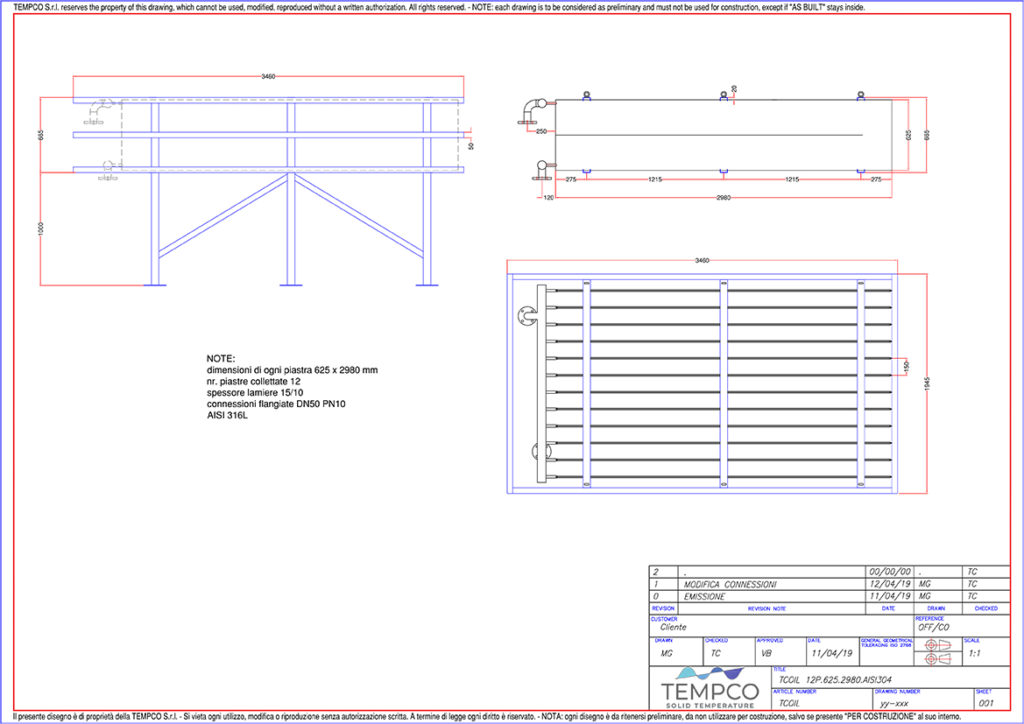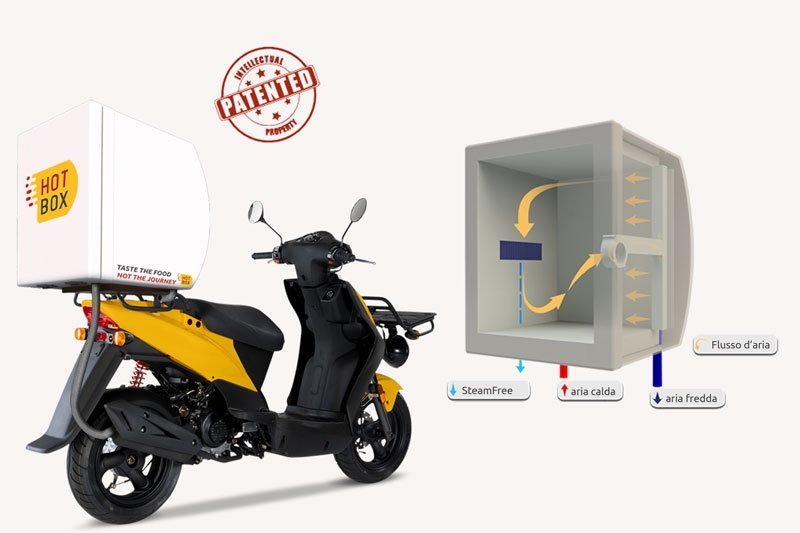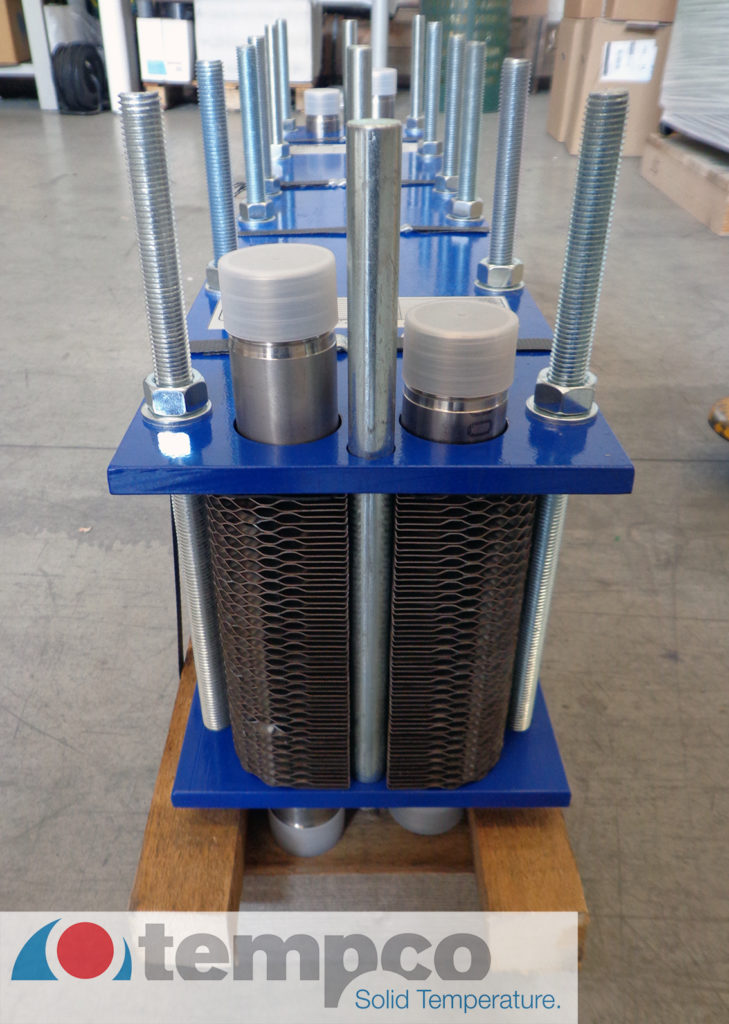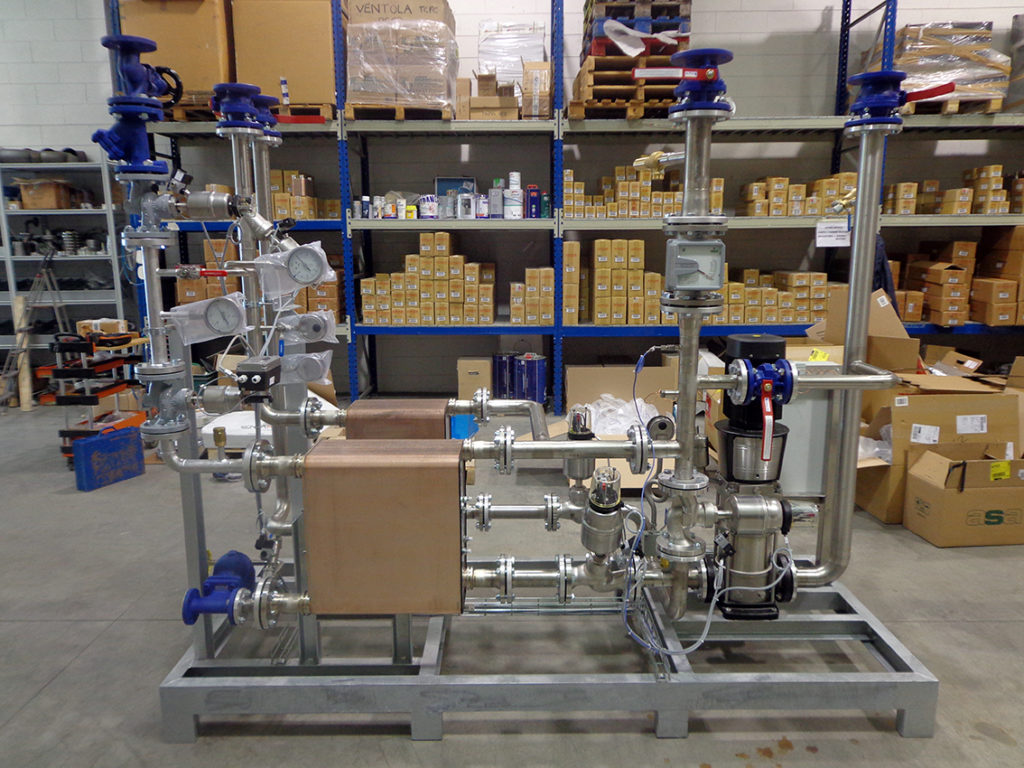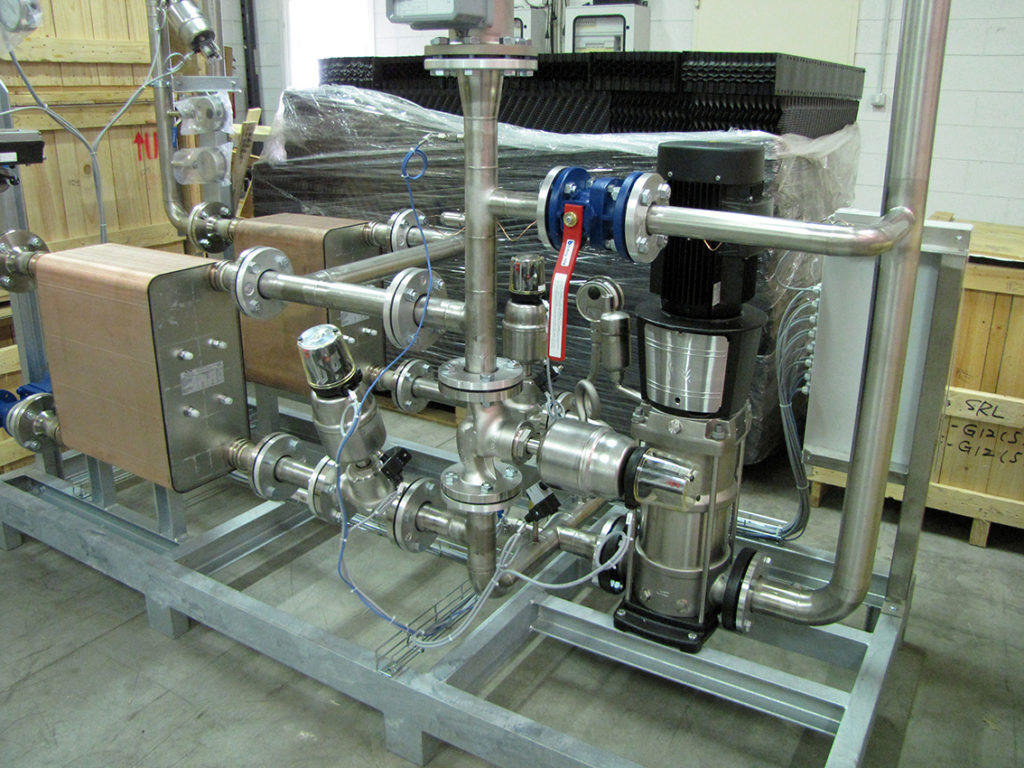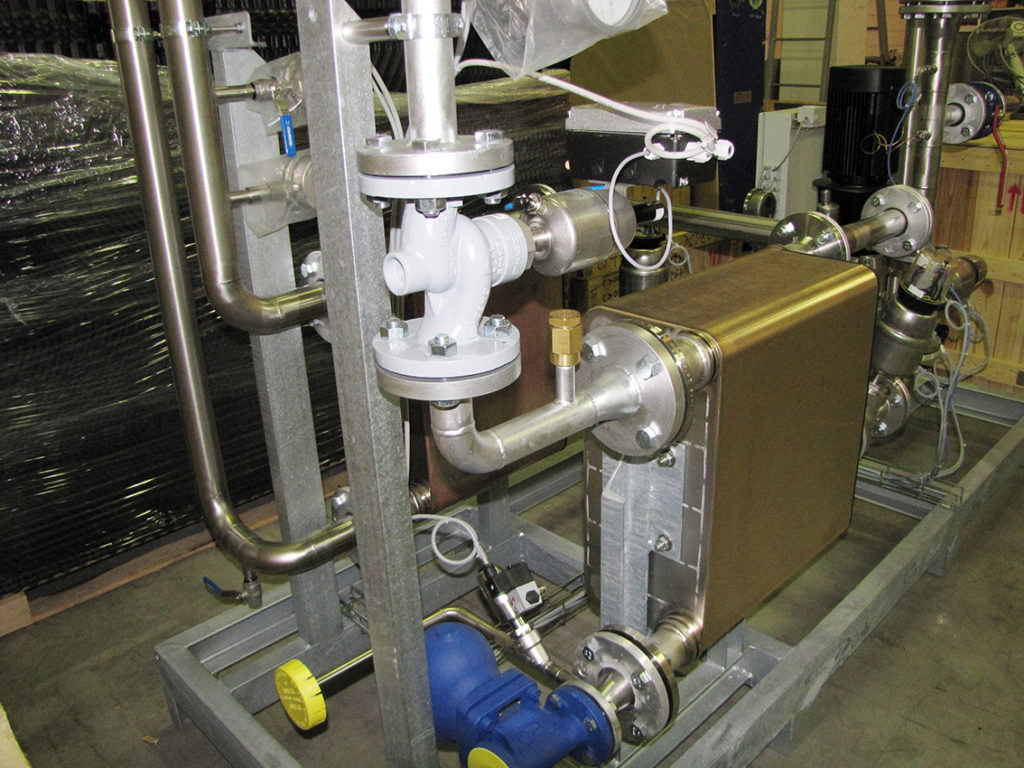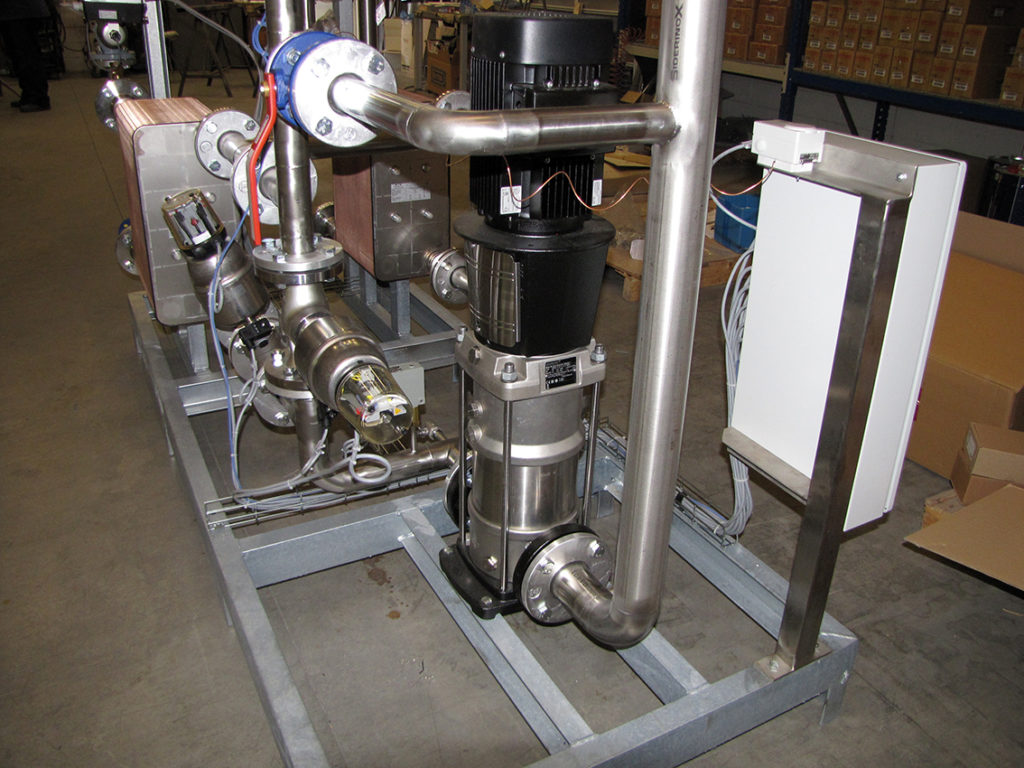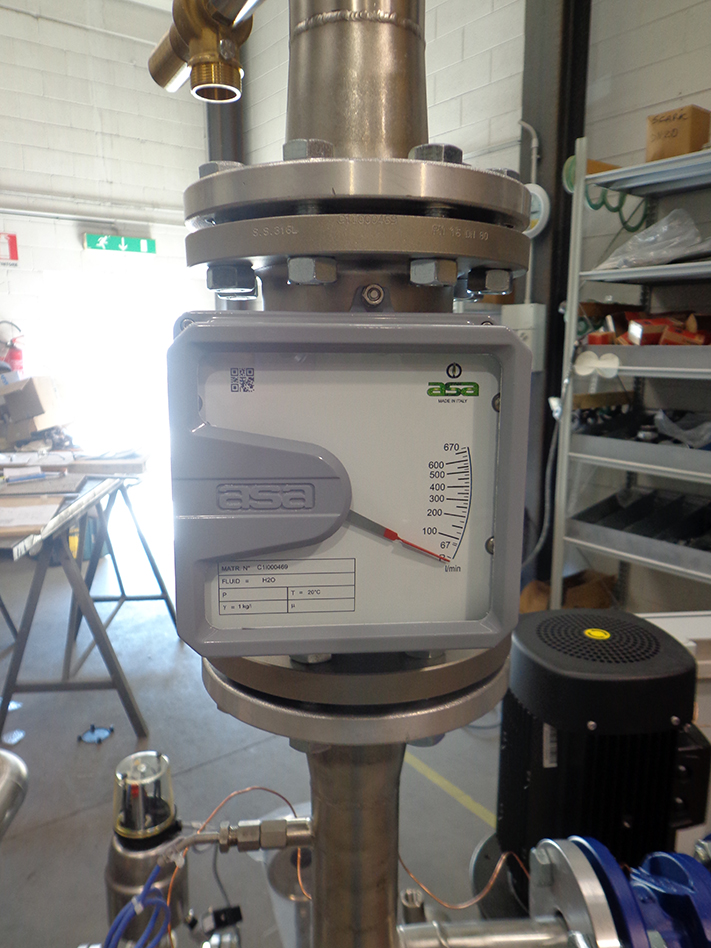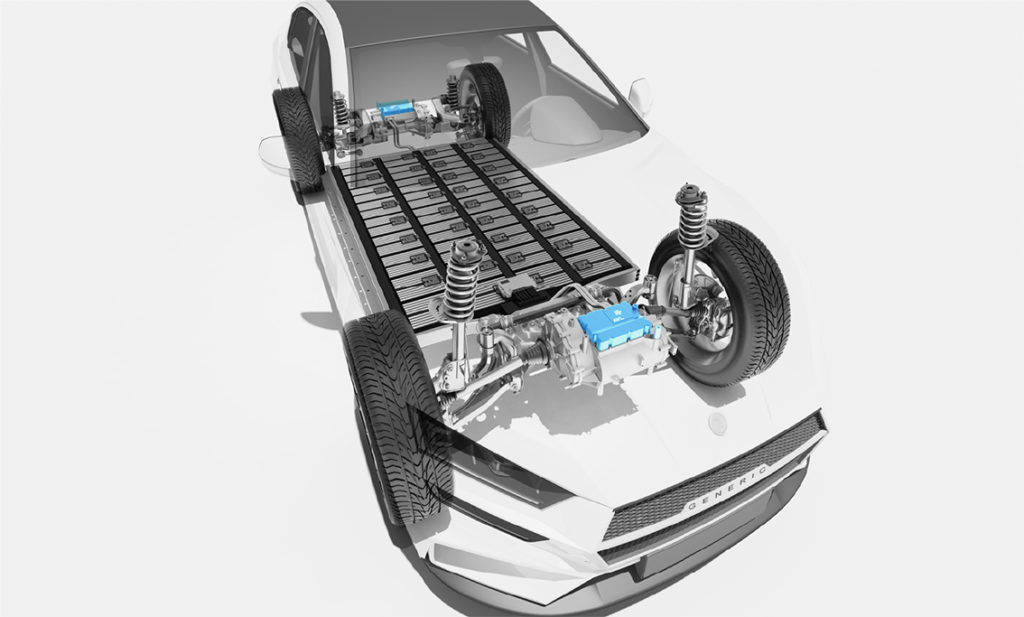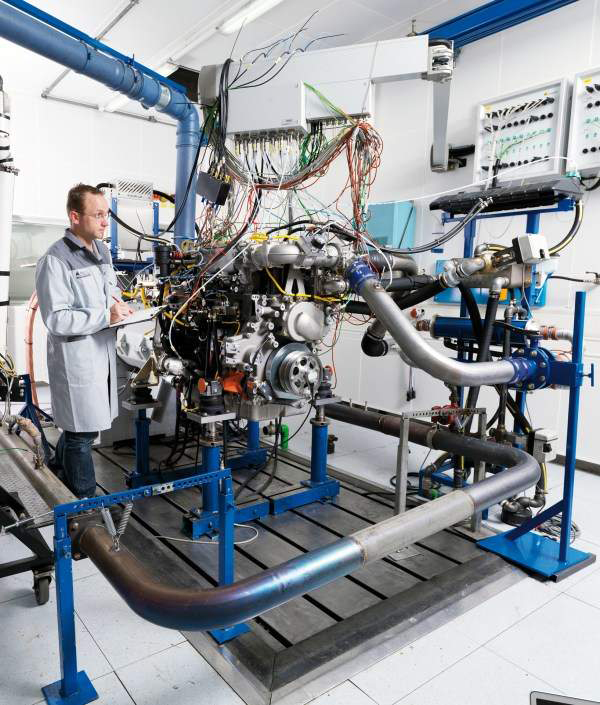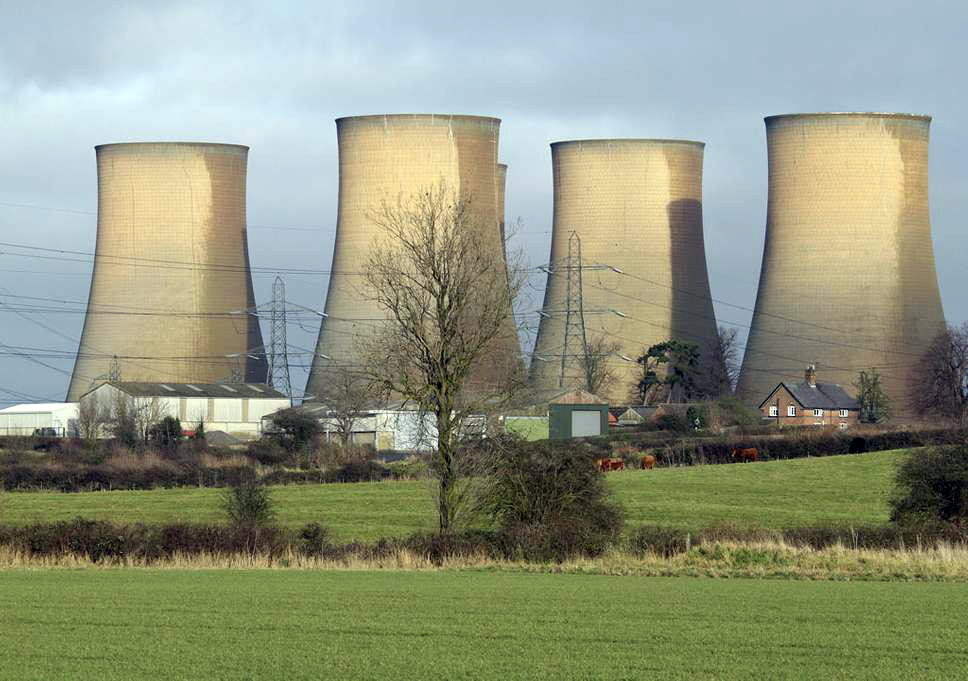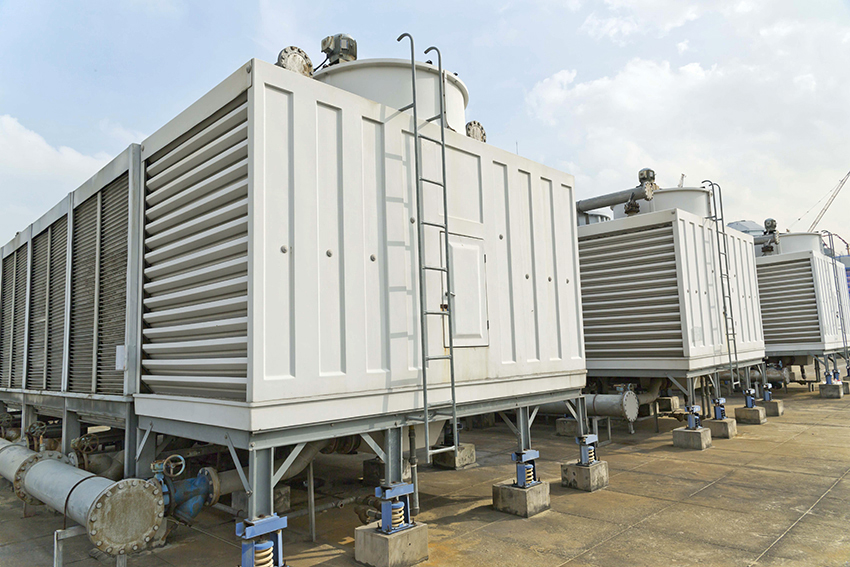Brazed plate exchangers are a particular kind of plate heat exchangers that can be employed in applications with high pressures and a wider range of temperatures. This is due to the peculiar manufacturing process involved, that gives brazed plate heat exchangers a high mechanical resistance: plates in this kind of exchangers are made of cold-pressed stainless steel, and during the assembly of the heat exchanger the plates are piled in top one of each other with cold-pressed foils of copper or nickel between them.
The plate heat exchangers is then placed in a vacuum furnace where, at high melting temperatures respectively for the copper or nickel, the two metals melt, flowing for capillarity in the contact points welding them. All the brazed plate exchangers are checked with hydraulic pressure test, ensuring there are no pressure drops and to eliminate the defective ones.
When is better to choose copper vs. nickel? The selection must consider two factors, the need to work with corrosive fluids and the pressure level involved in the application. Copper is indeed an excellent material, but it is not compatible with steam containing amine and ammonia, being corrosive on the metal and leading in a short time to leaks and pressure drops.
A copper brazed plate exchanger on the contrary can stand pressures up to 30 bar and more, while a nickel brazed exchanger offer lower working pressure limits, 15 bar for a standard version and up to 25 bar for special versions. On the other hand, nickel is corrosion resistant to aggressive fluids that can cause corrosion to copper.

